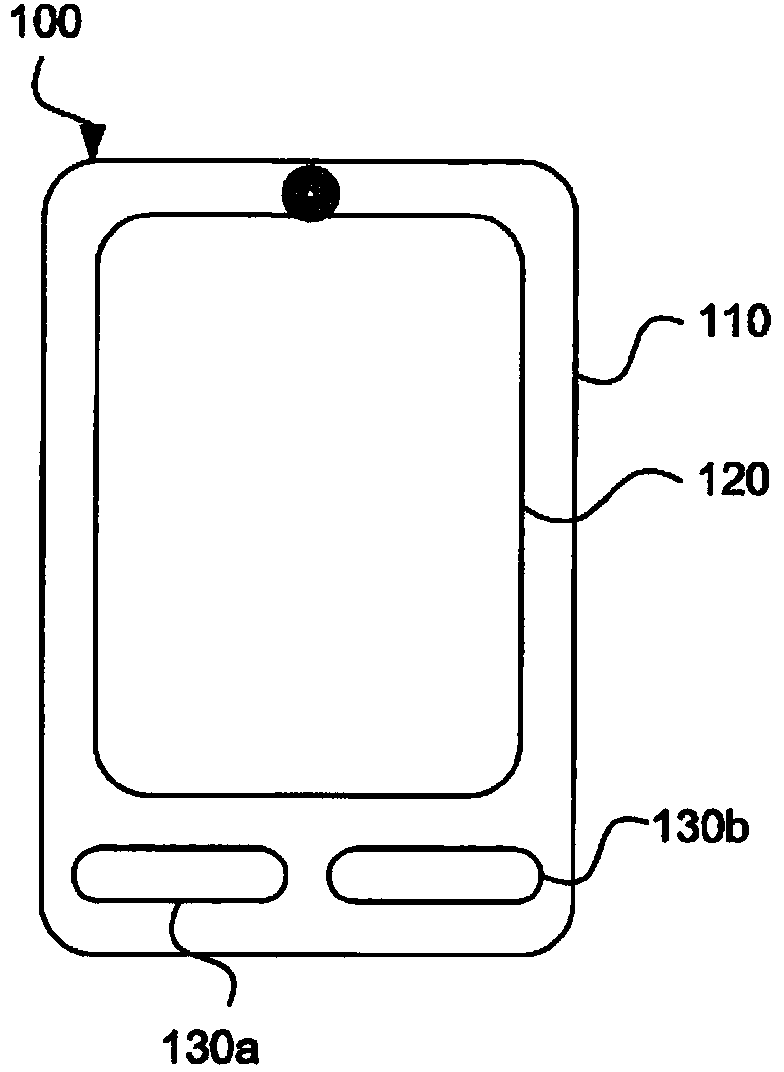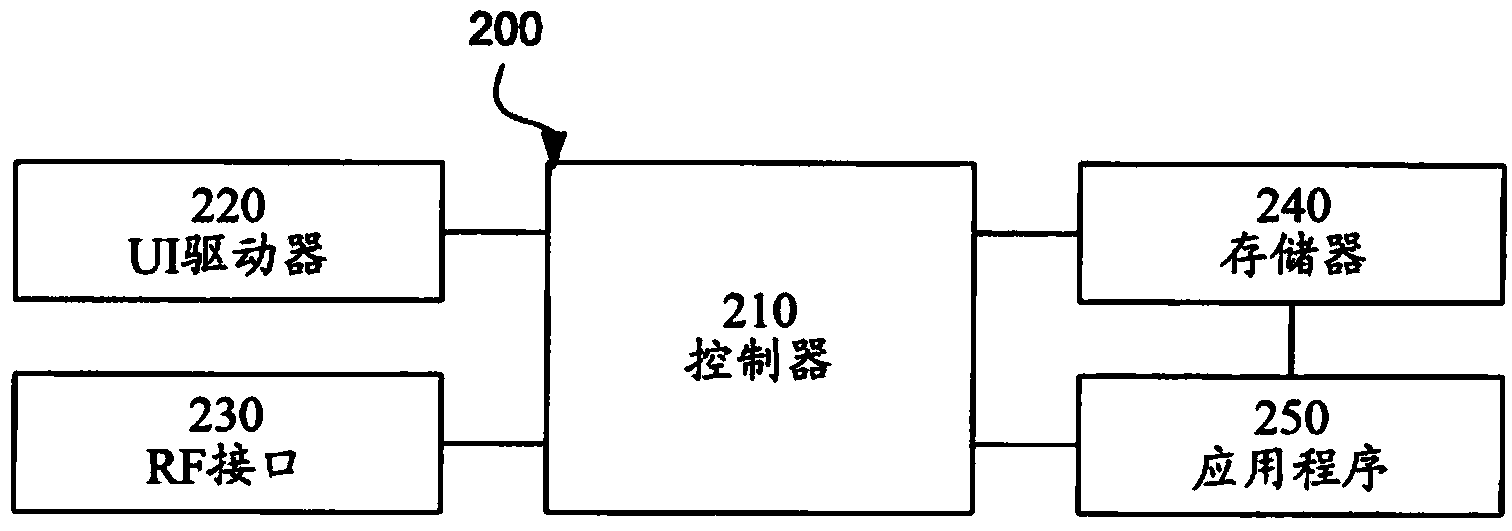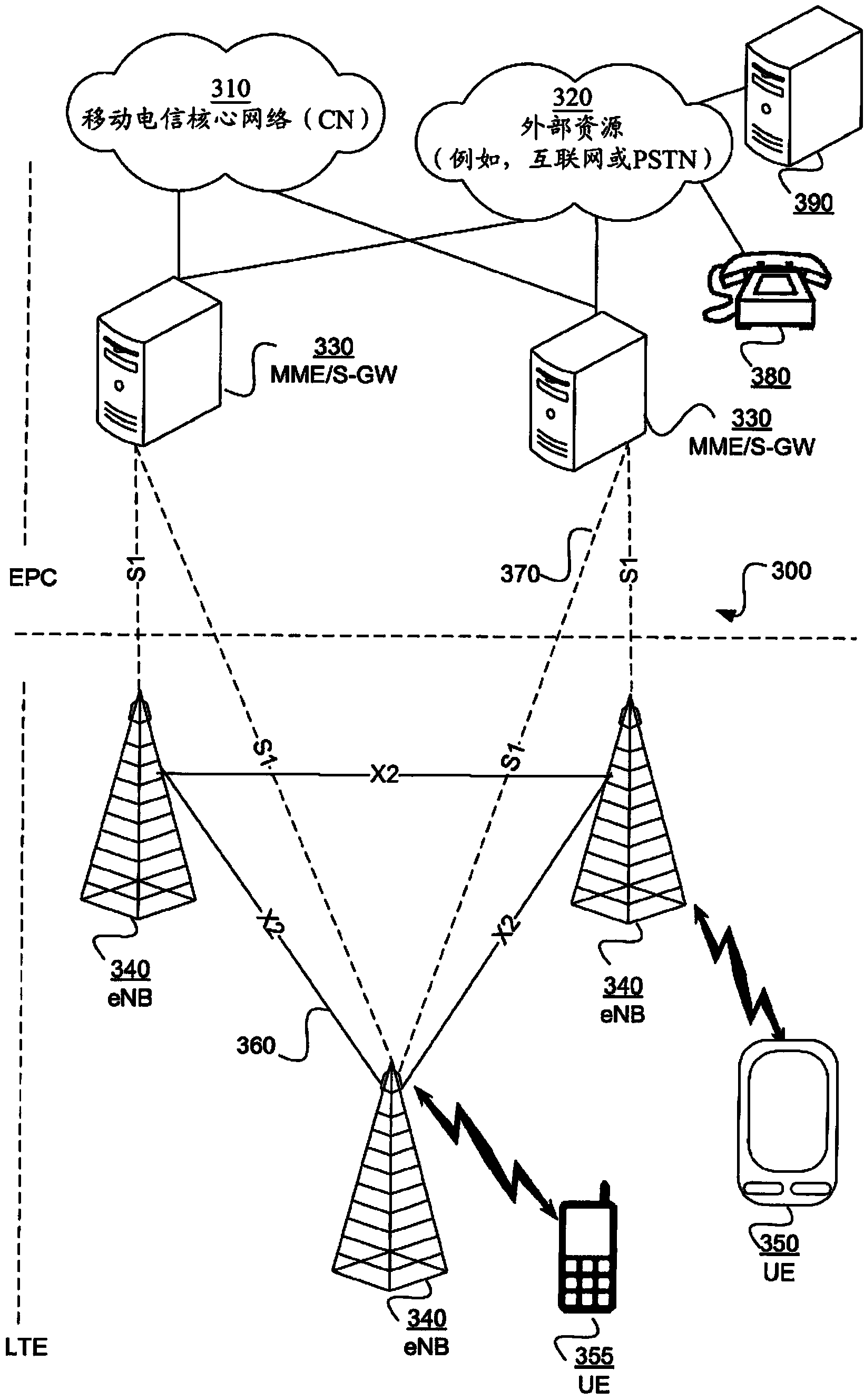Probability calculation of rat candidate
A probability estimation, probability technology, applied in the field of improving the selection of wireless access technology, can solve problems such as difficulty in determining the correct communication mode of the operation mode
- Summary
- Abstract
- Description
- Claims
- Application Information
AI Technical Summary
Problems solved by technology
Method used
Image
Examples
example 1
[0103] Example 1 – Difference between WCDMA and LTE5MHz
[0104] Figure 8Two frequency plots are shown. The graph above shows the energy of a radio signal 800 received at frequencies between 21 MHz and 36 MHz (at Figure 8 , the x-axis is represented at a distance of 15kHz). The lower graph shows the probabilities 840a-840b for the two candidate signals found in the upper graph. Figure 8 The above picture is with Figure 7 same graph. Figure 8 Shown is a situation where there are two cells; 1WCDMA (2114.6MHz) and 1LTE5MHz (2122.8MHz). Two candidates or cells have been identified as possible WCDMA and marked with asterisks 810a-b. Assuming that the RATs of the two candidates are WCDMA, a transmission band 820a and a transmission band 820b as well as a guard band 830a and a guard band 830b (marked with dotted lines) are determined. The probabilities 840a and 840b for the two candidates 840a and 840b are calculated and plotted in the figure below. Computing the proba...
example 2
[0105] Example 2 - GSM cell with low power compared to GSM detection of high power errors
[0106] Figure 9 Two frequency plots are shown. The upper graph shows the energy of a radio signal 900 received at frequencies between 0 MHz and 52.5 MHz. The lower graph shows the probabilities for the candidate signals identified in the upper graph. Figure 9 Shows the situation where there are three cells; 1GSM (in Figure 9 The carrier frequency in 2107MHz), 1WCDMA (in Figure 9 The carrier frequency in 2114.6MHz) and 1LTE5MHz (in Figure 9 The carrier frequency in 2122.8MHz). In this example 9, candidate 910 is identified as GSM (asterisk). The probabilities 940 for each candidate are plotted in the lower graph. For the leftmost candidate, calculation of the GSM probability will give P 1 = 0.65, and, for the rest of the detected candidates, is a probability between approximately 0 and 0.25, thus, also clearly seen from the figure below, the true GSM is classified as the m...
PUM
 Login to View More
Login to View More Abstract
Description
Claims
Application Information
 Login to View More
Login to View More - R&D
- Intellectual Property
- Life Sciences
- Materials
- Tech Scout
- Unparalleled Data Quality
- Higher Quality Content
- 60% Fewer Hallucinations
Browse by: Latest US Patents, China's latest patents, Technical Efficacy Thesaurus, Application Domain, Technology Topic, Popular Technical Reports.
© 2025 PatSnap. All rights reserved.Legal|Privacy policy|Modern Slavery Act Transparency Statement|Sitemap|About US| Contact US: help@patsnap.com



